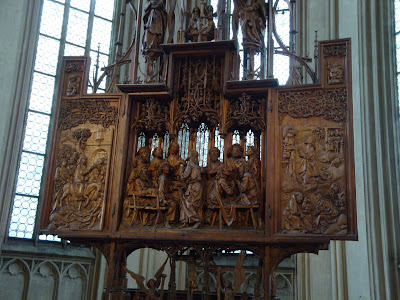
So. . .We ended up eating Taco Bell food in the Detroit airport after clearing customs and while waiting an extra 90 minutes for our flight to the Twin Cities. "Welcome to American food!" said one sad student.
It IS good to be home, but I'll miss a few things:
Walking five miles a day or more on crowded, friendly, winding sidewalks and cobblestone streets
Good coffee almost everywhere
Old buildings
The cacophony of multiple languages being spoken everywhere
Great food, even at highway rest stops
Remembering "hello" and "thank you" in four languages
Swiss and Austrian feather beds
Not having to drive everywhere
Mountains
Beautiful wine and robust beer
Not watching television
I'll also be happy to get back to a few things:
Free water (with ice) in restaurants and public water fountains
Plenty of free public restrooms
Internet access
Driving my car
Not having to walk everywhere
My own bed
Television
My family and friends
Cooking my own food
Well, I know the list isn't entirely logical, but that's one of the lessons of international travel. Some things don't always make sense, but it's a big, exciting world out there that never ceases to amaze.
















































